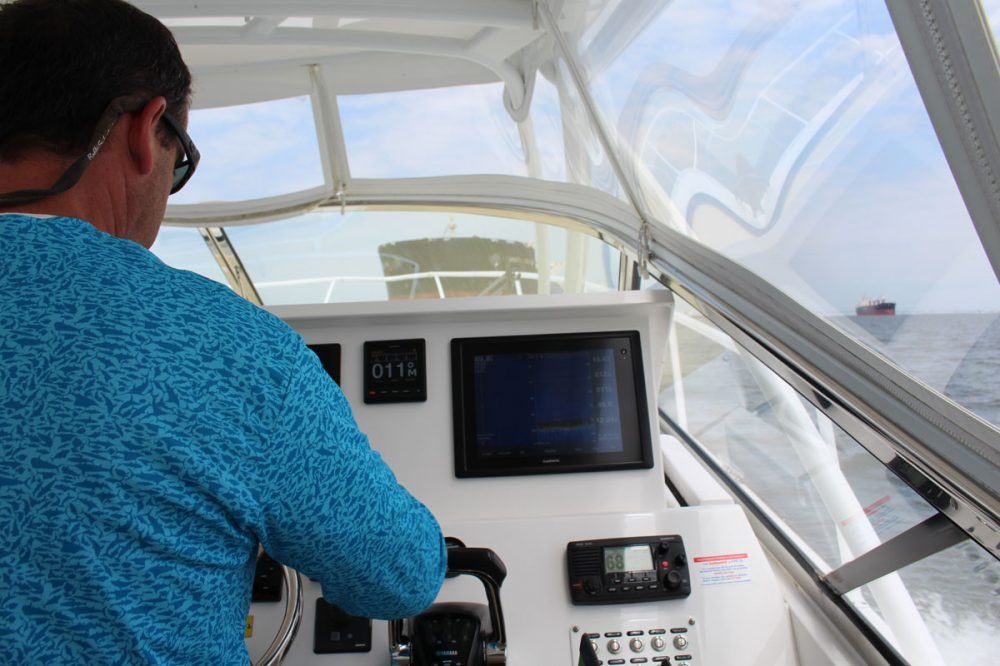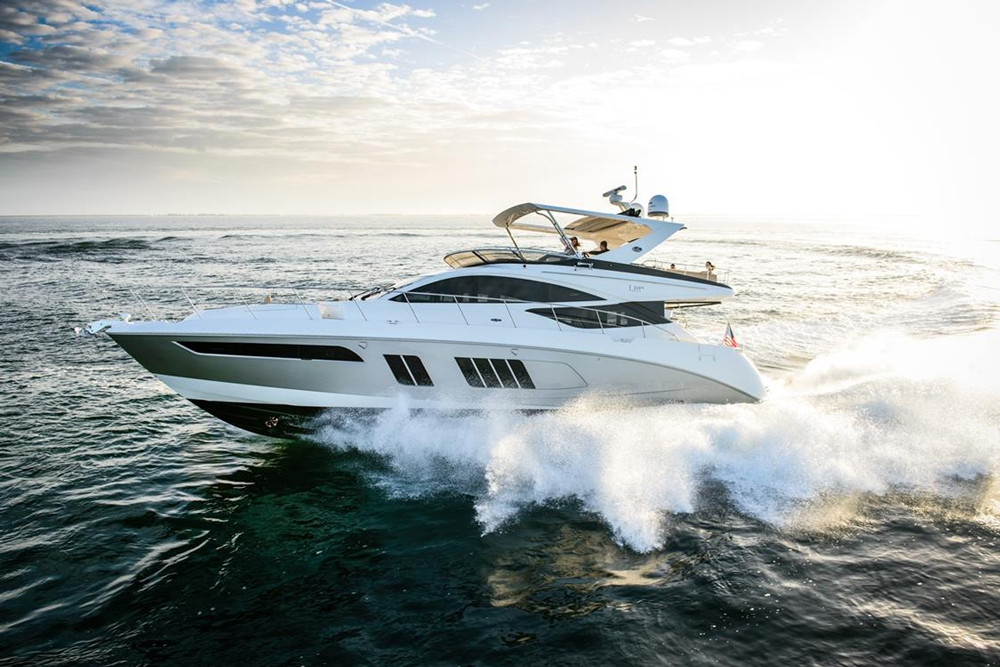Best Bet Blue Books for Boat Buyers
Blue books and online resources will help you better understand boat pricing.
After looking up the NADA Guide value (today called the J.D. Power Boat Prices and Values Guide) of the boat you found, it had been up until a few minutes ago one of the happiest days of your life. You had been looking for that perfect cruiser and you'd found it at a local dealership. It was a used boat, but it was in great shape and the price was right, too. In fact, the dealer had pulled out that used boat blue book to show you what a great deal you were getting.

Your 10-year-old Spitfire 28 Express had an average retail price, according to the "bible" of used boat dealers, of just over $32,000 but you had hammered the dealer down to $29,000. He'd offered financing but you were certain that your own bank could do a little better, so you'd signed the contract and promised to return later after arranging the financing. Now you are sitting in front of your banker, and he's pulled out his copy of the used boat blue book, "just to see what sort of money we're talking about," he'd said with a smile. As his finger traced the lines of tiny print, a frown crossed his brow and a sinking feeling suddenly appeared in the pit of your stomach. "Let's see — you said you paid how much ... $29,000?" he asks. Knowing that something is dreadfully wrong, you nod weakly. "Well, I have some bad news for you," he continues. "According to the blue book, your boat has an average retail value of $21,000 and we can't finance anything over 80 percent of that figure". Grabbing the book from his hand, you stare at the tiny column marked "AvRet." Sure enough, it says $21,000. How can this be? You saw a blue book at the dealership that showed $32,000 and now the bank blue book says just $21,000.
Welcome to the world of the used boat price guide, better known as the blue book, where a degree in statistical analysis can be a useful tool. There are, as you just discovered, not only different blue books, but each has a different way of reaching a value for your boat. And in fact, since they're all viewed on the computer these days they aren't even blue, nor are they books. Still, just as in the automobile world, used boat dealers and bankers rely on these "books" to set their retail prices, to figure trade-in allowances, and to determine the amount of a boat that can be financed. Insurance agents use price guides to set the premiums and values for their clients, and marine surveyors rely on them for guidelines in their evaluations. You should also be aware that the Internal Revenue Service may use these price guides to see if you're spending more money than you appear to be earning. It doesn't take much to feel like you've been eaten by sharks when negotiating to buy or sell a boat, so let's take a look at the boating price guides. First of all, there are three generally accepted price guides in the U.S., each bearing a distinctive style and name.
The Three Blue Books
From BUC Research comes the BUC Used Price Guide, which today is sold as an online subscription for one month ($33.95), six months ($197.35), or 12 months ($373.45). Spend $211.95 for the Premium Package and you not only get six months of access, but an actual book as well. National Automobile Dealers Association (NADA), used to be one of the best known blue books until it was purchased by J. D. Power. Today it's an online resource commonly used by retail buyers, which lists out pricing for 1,905 manufacturers. ABOS Marine Blue Books evolved into Price Digests by Randall Reilly and today offers online pricing and data tools that include the ABOS Marine Blue Book Online. A quarterly-updated subscription costs $299.95, or a single search can be purchased for $34.95.
What They Provide
Each of the services has a distinctly different set of information, based on how they perceive the needs of their customers. BUC lists both Retail Low and Retail High prices and applies historical data, boat model specifics, and the current economic climate, plus separates between seven geographic areas in the U.S. and Canada to reflect variations in pricing by location. J. D. Power uses year, make, model, and accessory data into account and expands the retail value range with Low, Average, and High prices. ABOS takes year, make, model, and submodel into consideration and lists MSRP, Retail, High, and Low valuations, reflecting the needs of dealers who use the book heavily for trade-in negotiations. ABOS is the only directory that lists the original manufacturer's suggested retail price.
How They Do It
If you thought that each used price guide simply kept track of all the sales of different types of boats, and then averaged the prices to get their listed values, you're sadly mistaken. In fact, none of the three services does it that way. In each case, they "massage" the numbers to some extent, based on either their own experience, a set of formulas that they have developed over the years, or the source of the values. Let's take a look at how each reaches the magic number for your boat. In business since 1961, BUC starts with hard market data, relying on a network of more than 4,000 boat dealers and yacht brokers nationwide. Taking dealer reports into account, BUC uses computer programs to apply a series of formulas that modify the raw numbers, resulting in the listed values that appear in the BUC books. For example, the boats of one manufacturer may be known to have an initial drop in value after the first year and then a steady depreciation, while the boats of another manufacturer may hold their price better the first year. The formulas for each manufacturer, combined with historical data, are then used to adjust the retail prices published in the previous price guide. Other variables that are factored into each listing include the engine type and size, fuel, and the current economic climate in general as well as the market for luxury items. Each retail value reflects a boat in "BUC Condition" (requiring no additional work and with average equipment). BUC includes boat specifications, which they gather directly from the manufacturer because, as BUC president Walter J. Sullivan III notes, "a surprising number of brochures from manufacturers contain incorrect data." BUC prices outboard boats without engines or trailer, and provides two separate price guides for that equipment that must be added to the retail low or high prices listed for the boat alone.

Founded in 1949 to provide prices on outboard boats and remaining trade-oriented, the starting point for ABOS price listings are reports from dealers and brokers. ABOS also reviews classified advertising, various marine multiple listing services, and the Internet. Another formula is used to reduce the asking prices to the estimated wholesale low and high prices that a dealer would use for trade-ins. Prices are set for mechanically sound, clean and saleable boats with no repairs necessary. Other variables used by ABOS to determine prices are the trends relating to the popularity of certain types or sizes of boat, taxes, inflation, interest rates, and the condition of the economy.
J. D. Power relies on sales data and a sales reporting network of dealers, marine surveyors and brokers. Those hard number reports are combined with research of various used boat advertising sources which, factored down from asking price, come up with the retail values. It is interesting to see how each book handles stern drive boat prices. ABOS and J. D. Power, for example, list a single model of each boat and then provide a chart that lists additional values depending on the horsepower increase of upgraded engines. BUC goes to great lengths to list nearly all of the possible boat and motor combinations for each manufacturer along with the specific values of each boat. Each book also handles condition differently, with ABOS adjusting the boat values based on a percentage from a descriptive chart (Excellent to Rough). BUC combines condition and equipment into a single scale, adding 15 to 25 percent for a heavily loaded and perfectly maintained boat, and deducting up to 50 percent for a boat in poor condition or with no extras. J. D. Power, with three value ranges, makes no mention of condition other than advising that overall condition must be taken into account.

The books also differ on their handling of optional equipment. J. D. Power follows the automobile blue book style by listing nearly every possible item of optional equipment, broken down by year, and then adds a dollar figure to the retail boat value. ABOS, on the other hand, notes that optional accessories originally costing less than $500 don't increase the value of a boat on the used market substantially. They do, however, provide a table to add up the original value of the options and then offer a schedule of values that should be added to the boat price. BUC, as mentioned before, combines condition and equipment together, leaving the question of how to price a perfectly maintained but poorly equipped boat, or a heavily equipped but cosmetically flawed boat. And that, in essence, sums up the world of marine price guides. Each book, at some point, makes it perfectly clear that the values listed are simply guidelines and that anyone — dealer, broker, insurance agent, buyer or seller — must use their own knowledge of the boating market to judge the value of each boat. As one broker commented when discussing the use of price guides, "Every seller thinks a boat is worth more than it really is, and every buyer thinks a boat is worth less than asked. That's the nature of the business."
The New Way of Blue Book Value
It shouldn't surprise anyone that in this day and age, online resources have overcome printed books as the best way to get a boat value. And, while strictly speaking it isn't a blue book, the latest way to look up boat pricing in near real time to is use an entirely different tool: the Boat Trader Boat Price Checker. This (free to access) service is based on current listing prices for boats, so it accounts for variables affecting the used boat marketplace like market trends, inventory levels, location, and more. You select the boat by year, make, and size, then add in your zip code and specify the area to search. You can make it a tight radius like 10 miles, or search at any distance. In addition to pricing information the Boat Trader Boat Price Checker gives you a link to all the current listings in the Boat Trader database under the parameters you've set.

For anyone using these guides to buy or sell, the best advice is to do some market research in your own area for comparable boats, understand that the price guides don't necessarily agree in values, and be prepared to negotiate a satisfactory price on your own. Simply checking the pricing of boats for sale on boats.com will also add to your base of knowledge. Visit the boats.com Boat Buyer's Guide, to learn more about the ins and outs of buying a boat.
Editor's Note: This article was last updated in March of 2024.












